
Indeterminate Design Has Made A 3D-Printed Formula One Gearbox!
- Jun 14, 2020
- Views : 5613

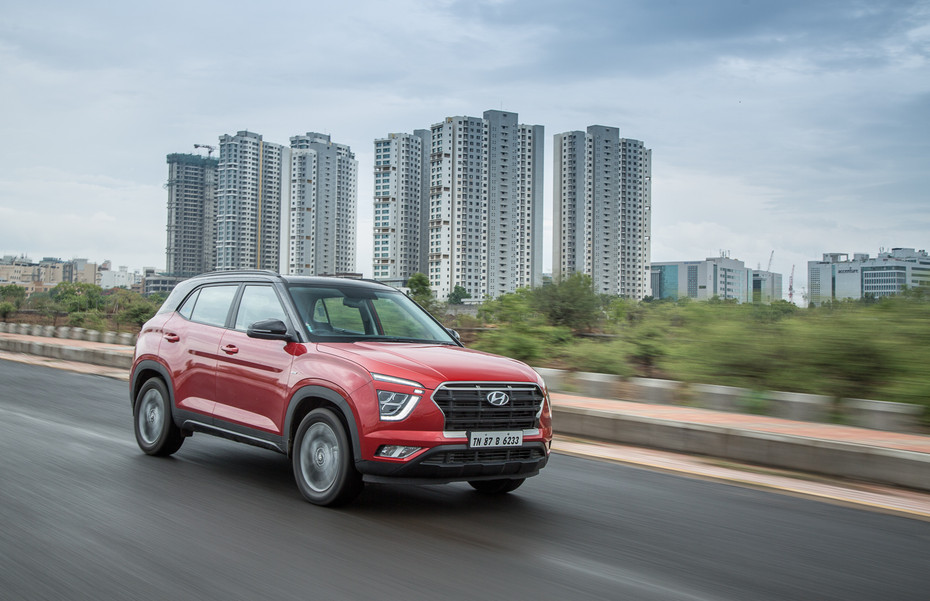
So far, 2020 has turned out to be a massive dis, a sentiment that the Creta could share as well. After five years of practically dominating a segment it pioneered, it was recently bumped off the top spot by a very close family member. Perfect timing then for the 2020 Creta to make its appearance.
It’s larger both in terms of length and width and also sits on a longer wheelbase. Of course, there’s a whole set of new features, new pricing, new engine and gearboxes as well. But has Hyundai done enough to put the Creta back in pole position?
A New Persona
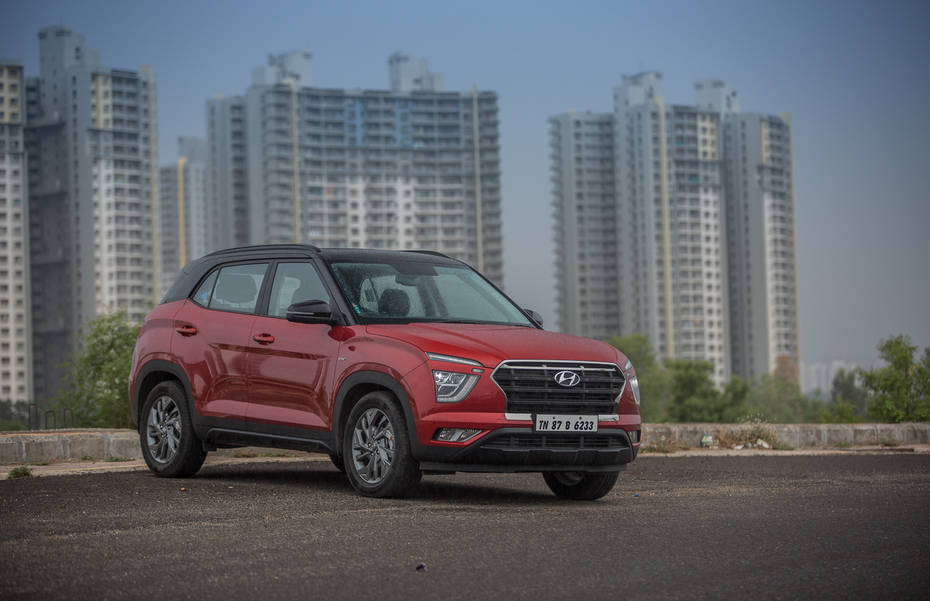
A big change and the first one that you will notice is the new rounded design which is part of Hyundai’s new ‘Sensuous Sportiness’ design language -- quite similar to the look of the Venue. Gone are the more boxy proportions that made the Creta famous and quite popular. In its place are large split LED headlamps, a larger grille, and rounded corners that can be a little polarising to some.
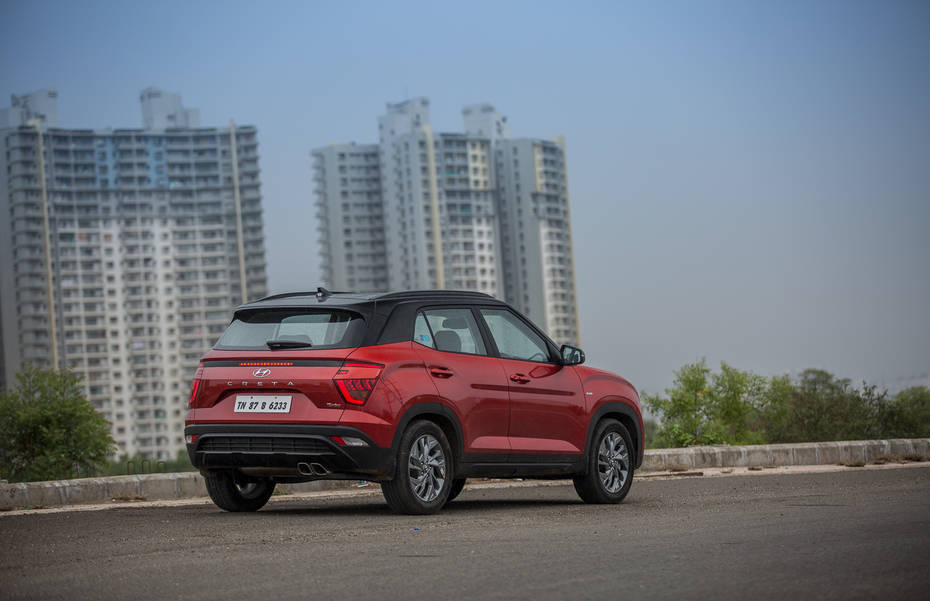
Along the sides is where some of the old Creta DNA is still visible in the shape of the shoulder and roofline. But there are new chunky wheel arches and a flashier alloy wheel design. At the rear, the design is more conventional and still retains some boxiness. The only quirky bits that catch your eye are the wide central brake light and the split tail light design.
In terms of sizing, it is longer and wider and sits on a longer wheelbase than the outgoing Creta by a few centimetres but it’s actually a little shorter as well. Still the overall effect of the rounded edges, large split headlamps, and large grill has given the Creta a lot more road presence and we do have to admit that in the flesh it isn’t too harsh on the eyes.
|
Dimensions |
Old Creta |
2020 Creta |
|
Length |
4270mm |
4300mm (+30mm) |
|
Width |
1780mm |
1790mm (+10mm) |
|
Height |
1665mm |
1635mm (-30mm) |
|
Wheelbase |
2590mm |
2610mm (+20mm) |
|
Boot Space |
400L |
433L (+33L) |
Features and Interiors: Hits & Misses
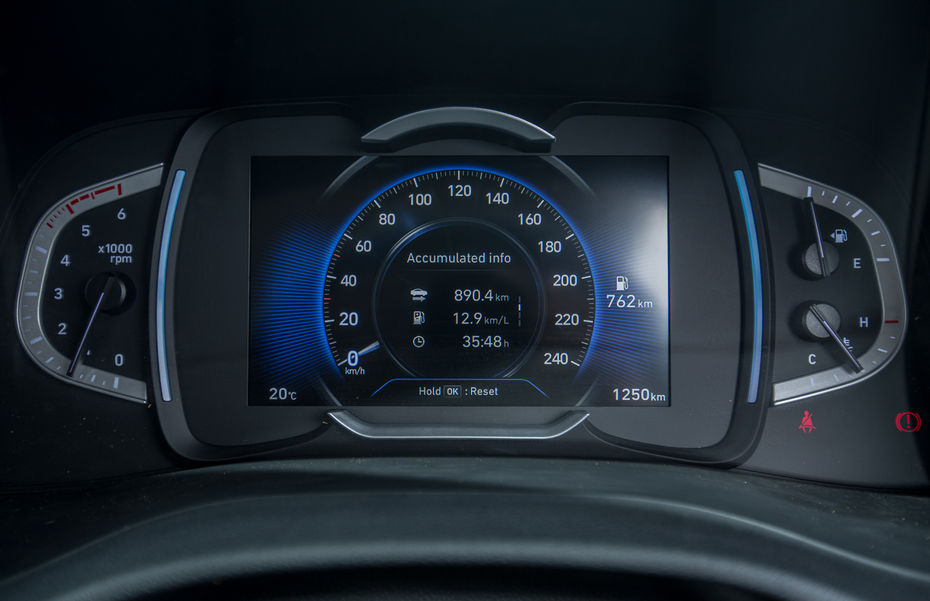
We managed to drive both the 1.4-litre turbo petrol with a sportier all-black interior and the SX(O) diesel manual which has a black and off-white design that’s airier. Practically everything on the inside has changed with the new Creta. There’s a new semi-digital dash in front of the driver with a bright full-colour display. The digital screen is nicely laid out and shows you a lot of information including tyre pressures, compass and trip information. The tachometer is an analogue dial but is pushed to the left side and we would have liked it to be a little larger in size.
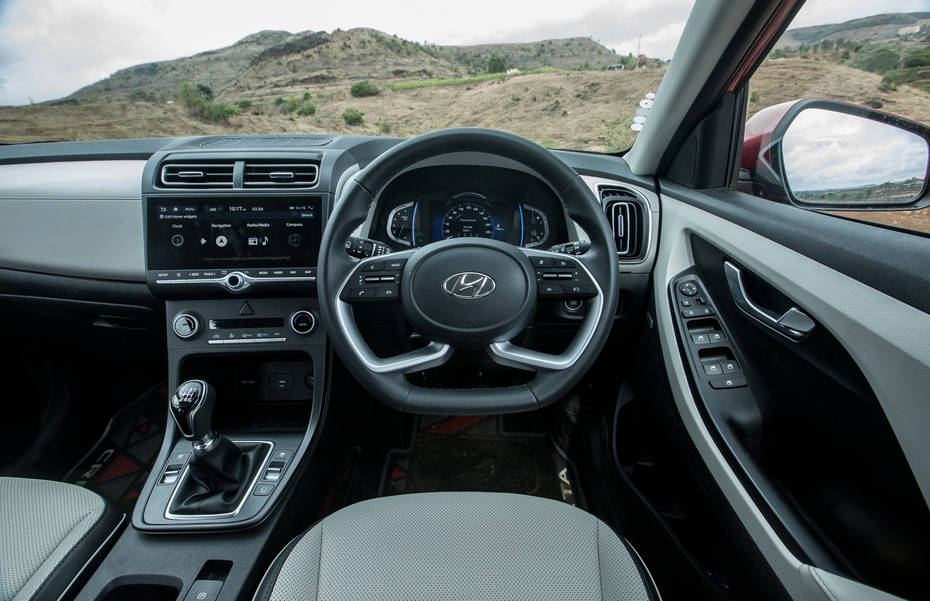
There’s a new flat-bottom steering wheel that looks nice and in the turbo petrol also comes with paddle shifters. We don't like the ergos of the lower silver spokes though as they foul with your palm when turning lock to lock. Also, the reverse side has an odd texture which you feel on your fingertips when taking turns.
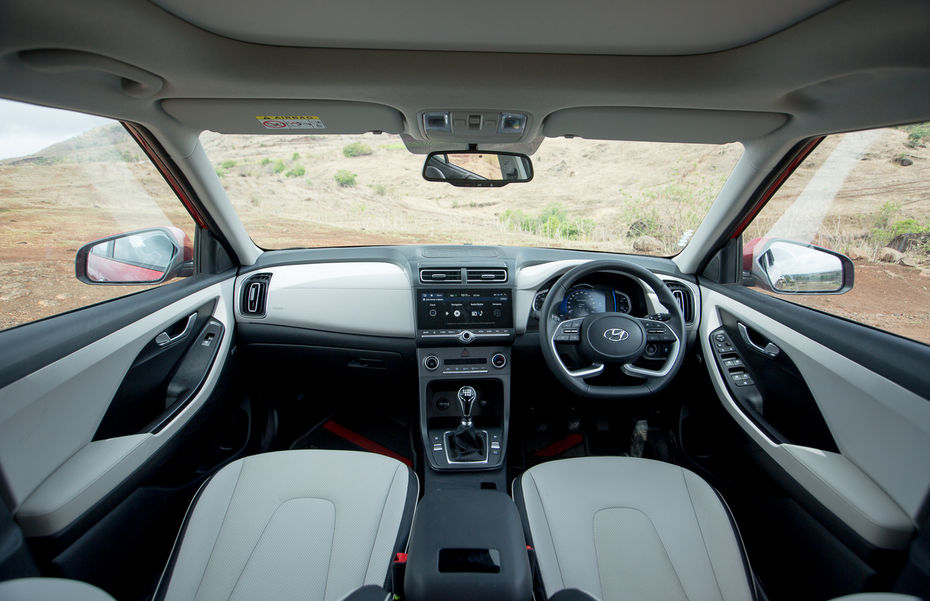
The extensive use of hard plastics both on the dash and on the door pads is also a bit of a downer. To Hyundai’s credit, there are a lot of soft-touch finishes and textures that look good but a few more soft cushioned areas would have made the cabin feel a lot more premium. The fake leather texture complete with fake plastic stitching on the dash, in front of the passenger seat, is quite a letdown.
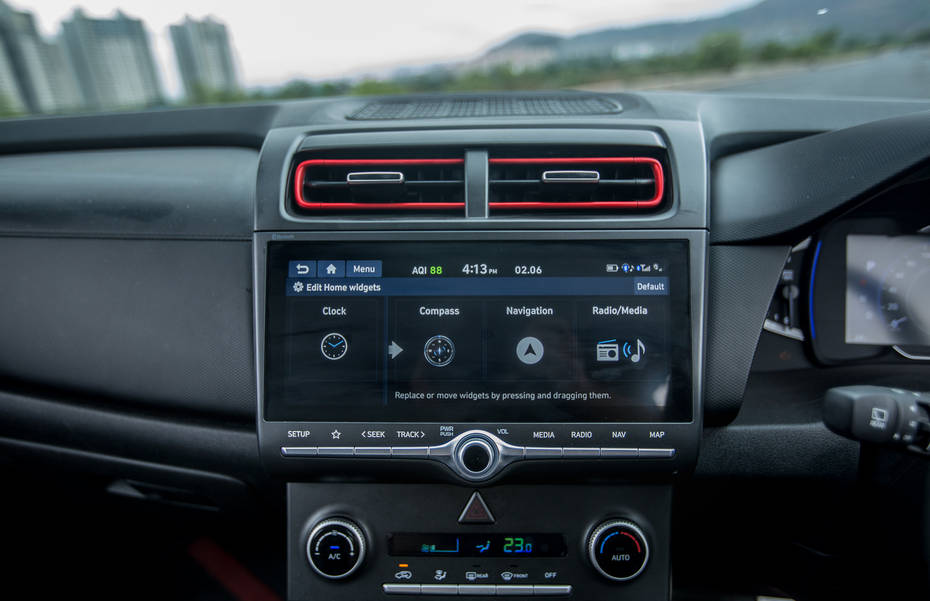
Thankfully, there are improvements elsewhere. The touchscreen has grown to 10.25-inches and the interface is still nicely designed and easy to navigate while the colours and touch functions are nice and snappy to use. The Creta now gets Blue Link that we have seen on Hyundai’s other connected cars like the Venue and the Elantra. It has the same functions as before like remote engine start/stop, monthly health reports, stolen vehicle tracking, and now even voice commands for opening and closing the panoramic sunroof.

That brings us to another standout feature in the cabin: the new panoramic sunroof. It does a great job of giving the cabin a very spacious vibe, especially in the lighter two-tone interiors of the diesel. But we have some complaints about the way the control button functions. There is a two-stage button that either opens just the sunshade in the first stage or the shade as well as the roof when pressed fully. The first stage is very soft and you can hardly feel it, in fact, you could end up opening the whole roof when you don’t intend to, like when you’re cruising down the highway. Not a drastic problem but a quirk that you’ll have to get used to as an owner.
Hyundai have strangely given a miss to some features that the Kia Seltos, which is based on the same platform gets. Like a head’s up display, reach adjust for the steering rack, center headrest in the rear, 360° camera, front parking sensors and colour adjust for the ambient lighting. It does get one more speaker to the Bose sound system, paddle shifters on the petrol automatic and an electronic parking brake over it’s cousin.
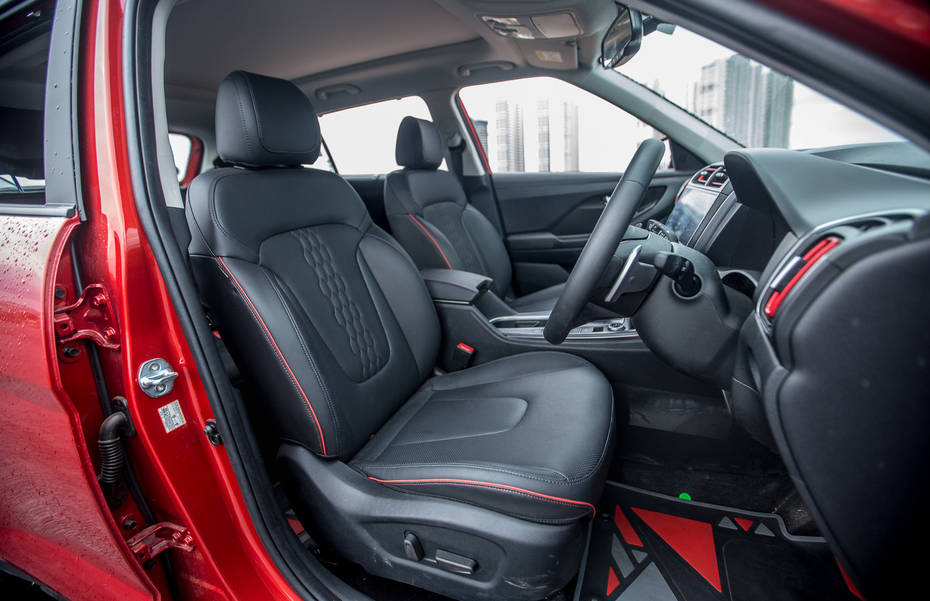
In terms of seating, the front seats are nicely contoured, supportive, as well as air cooled. But the lack of steering reach adjustment means taller drivers may have trouble finding a comfortable driving position. In the rear, you sit a little low, and this allows you to stretch your feet out a bit. There's even one step of seat recline that gives the seat back a nice angle and would be comfortable on long journeys. Tall passengers may complain about a lack of underthigh support though headroom and knee room is comfortable.
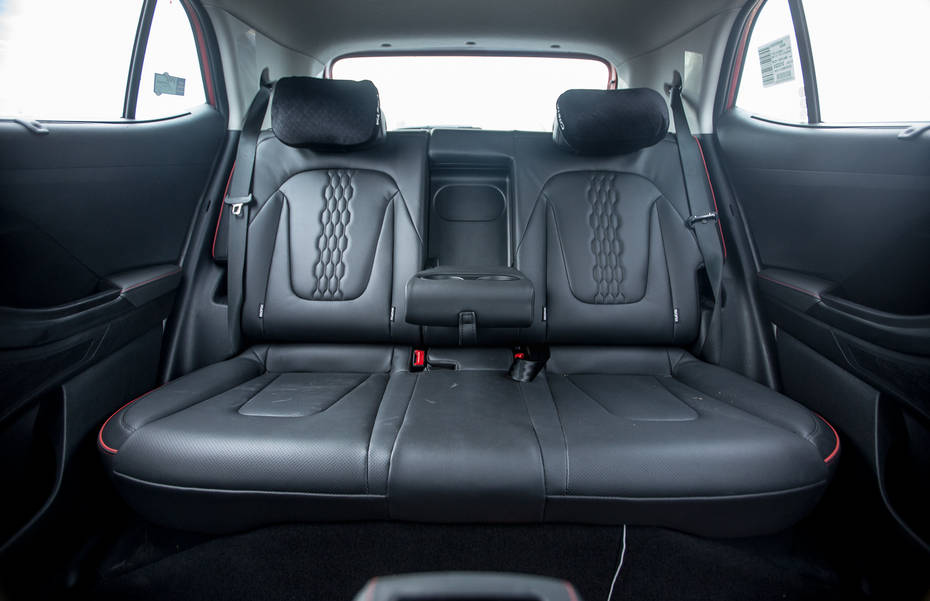
While the rest of the dimensions have grown, it isn’t all that good in the interior, in fact, there’s a little less maximum leg and knee room for the front seats. The rear width has increased though with knee room staying roughly the same and this would help in seating three abreast easier. The central console does eat into the central foot room though and there is also no central headrest so we would recommend three in the back only for short distances.
That central console houses aircon vents, a USB charge socket, air purifier, and a place to store your mobile phone. There’s even space in the doors for full-sized water bottles, a central armrest, and still more place to store snacks so either on road trips or chauffeur-driven trips, owners will find the rear a comfortable perch.

The boot of the Creta has grown by 33 litres to 433. It’s not very tall though and this limits the amount of luggage you can fit in here with the parcel tray in place. But with it removed, you can fit in a lot more. The seats fold in a 60-40 split and also fold down helping shift multiple items around.
A Different Driving Experience
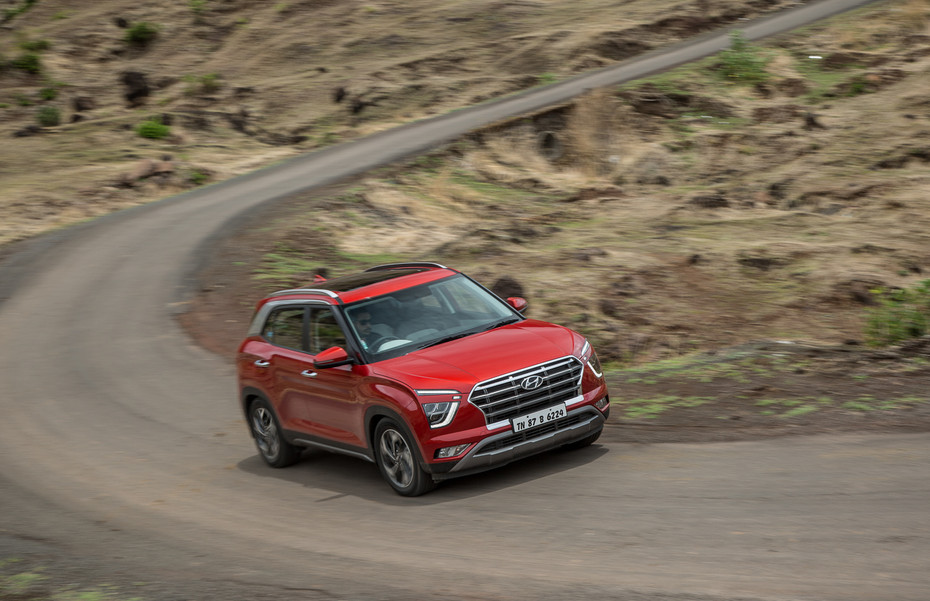
The new Creta comes with all-new drivetrain options so where there were two diesels and one petrol, we now have two petrols and one diesel engine. The pick of the lot is the 1.4-litre turbo which we’re driving now. At 140PS, it’s the most powerful in the lineup. The engine is nice and peppy across the rev range with plenty of pulling power when you step on the gas. It’s also nice and linear with no perceivable turbo surge but it’s not the kind of engine that will have you chasing the redline either. So it shrugs off daily duties in the city and highway cruises with ease and there’s always more performance for a spirited weekend blast through some corners.
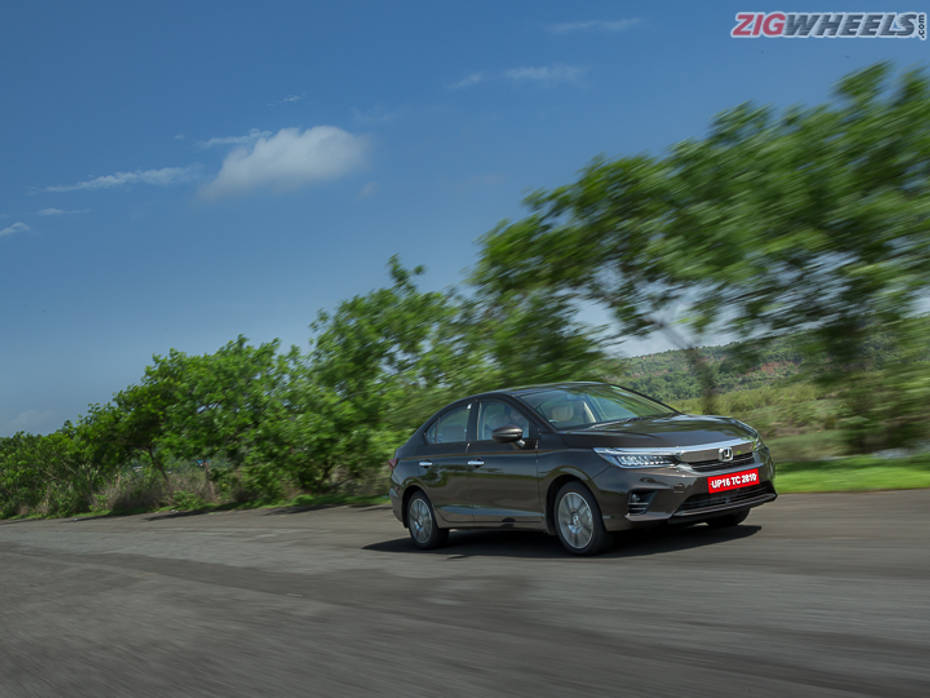
There are also three drive modes: Comfort, Sport and Eco that change the throttle response and gear logic. With Eco, of course, there’s a much gentler throttle response when you press on the accelerator gently but as soon as you push a little harder, there is some nice punch available. So it’s certainly not boring in Eco and that’s a good thing and a pleasant change from the dull Eco modes we’re used to. Comfort works well for all other driving conditions and Sport quickens up throttle response quite a bit so is best left for when you’re in the mood for some spirited driving.
You also get traction control modes, which allow you to adjust the traction control systems depending on the road surface conditions so there’s mud, snow and sand. It’s a helpful aid to have but not something we see too many owners using too often.
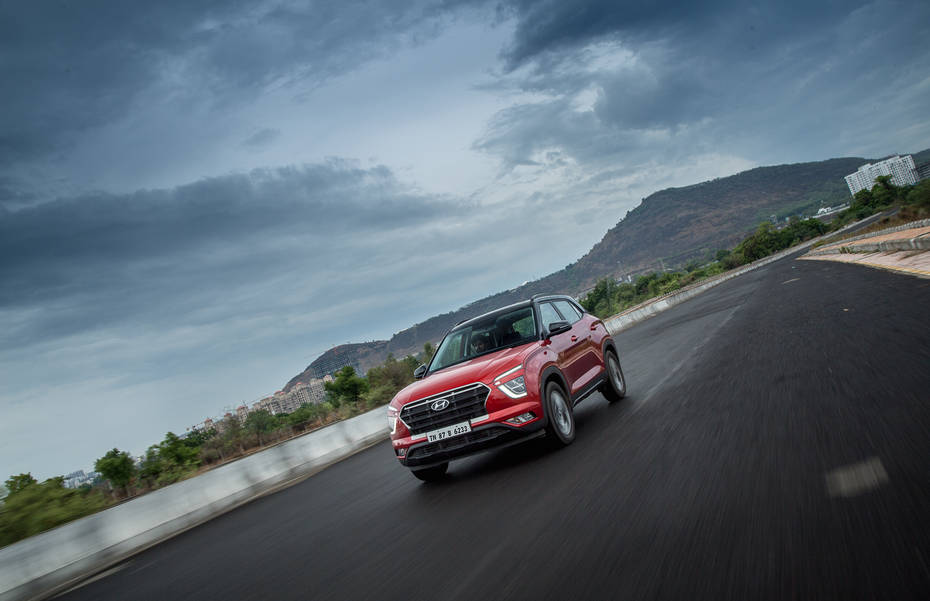
We’ve also stepped behind the wheel of the new 1.5 diesel engine. New for the Creta but something we have driven in the Seltos before. It makes less power than the outgoing 1.6-litre engine and even accelerates to 100kmph slower. But where it matters, in 3rd and 4th gear accelerations, the new engine is quicker by almost a second in 3rd gear and almost 3 seconds quicked in 4th gear.

This motor is all about the driveability and also pulls in a very linear manner from low revs without too much of a jump in torque when the turbo kicks in. It’s paired with either a 6-speed manual (which we had) or a conventional 6-speed automatic. It’s a fuss-free driving experience both in the city and on the highway. The highway mileage saw a little drop but the city mileage was a good deal better than the outgoing engine.
Improved Ride and Handling
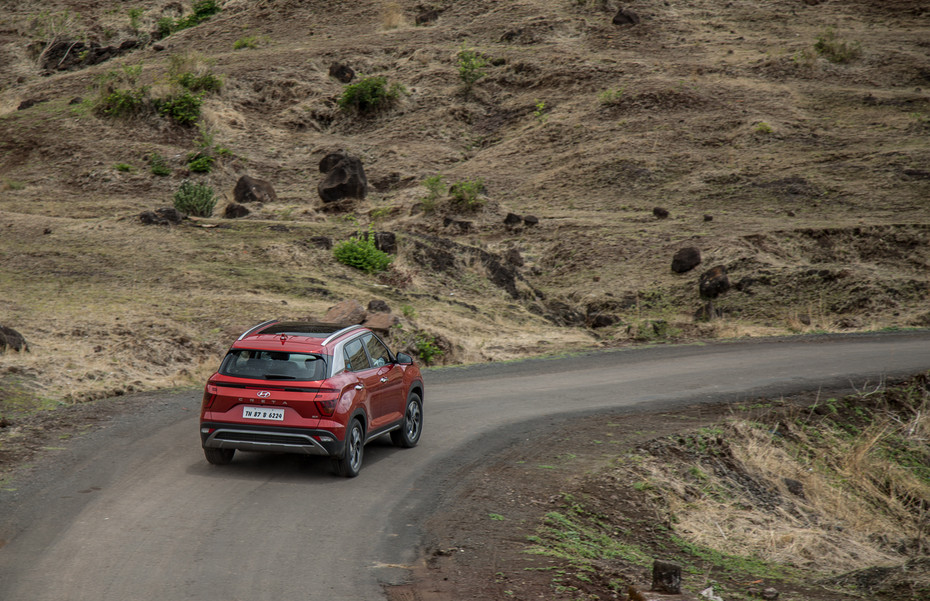
The Creta has a more sophisticated feeling to it now and the ride is more comfortable and polished than before. In the city, over speed breakers and bigger bumps, the suspension soaks up the impacts in a quiet and unflustered fashion. The cabin insulation has also improved a lot and does an excellent job at keeping road and wind noise out of the experience. Handling has also seen an improvement with the new Creta staying flatter through corners and turning into them nicely too. There is some body roll but it’s very predictable and doesn’t unsettle the car through faster corners. The steering is a little on the slow side but the weight is a big improvement from the light and lifeless wheel feel that we are accustomed to from the brand. The one complaint we have, and it’s a small one, is that there is some movement over smaller undulations at highway speeds that sees some side-to-side movement creep into the cabin.
Overall though, with this new spacious, quiet and comfortable cabin, you get a feeling that the Creta has grown up quite a lot.
Safety Check
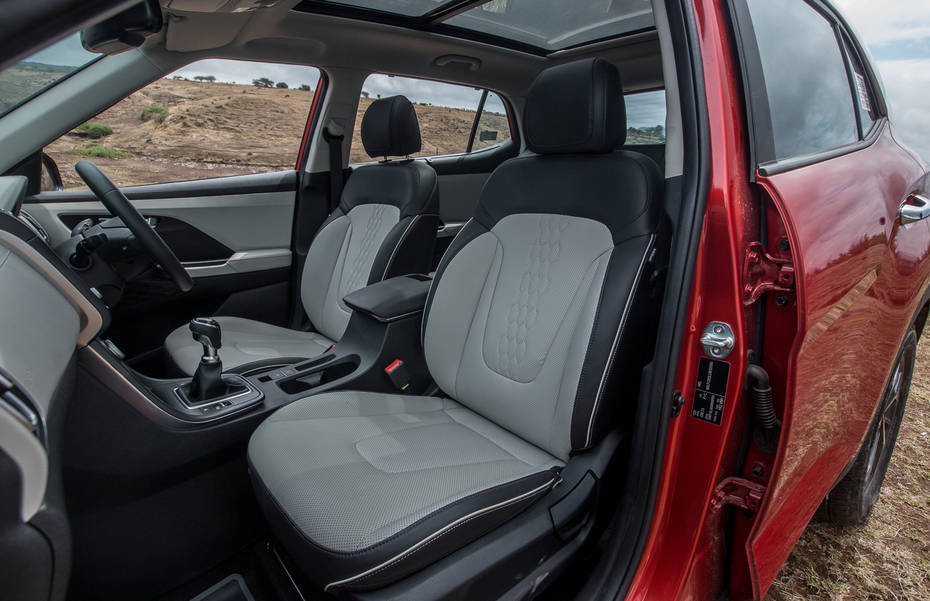
In terms of safety, there are six airbags, disc brakes on all four corners, ABS, Vehicle Stability Management, Hill Assist Control, traction control, drive modes, a rear parking camera with dynamic lines, and seatbelt pretensioners with load limiters.
The Price Tag
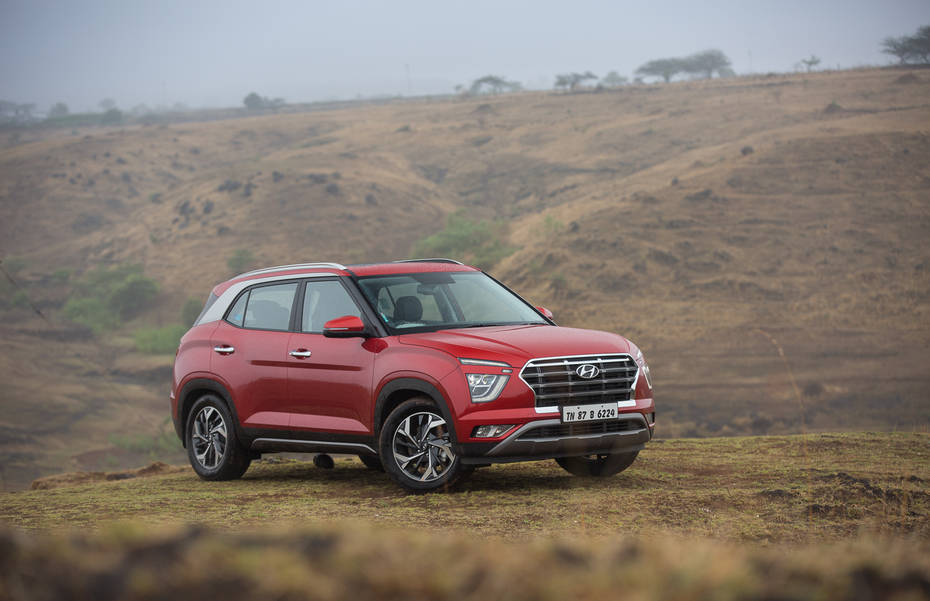
There has been a bit of a jump in the pricing with an increase of just over Rs 3 lakh for petrol and Rs 1.5 lakh for the diesel variants. This is on account of the more powerful and advanced turbo-petrol and dual-clutch auto on the petrol side and an increase in the pricing of the automatics paired with the new diesel. Given the added features and new tech in the drivetrain, this hike is more or less justified and there are some bargains in the variants too. For instance, the top-spec petrol manual is actually Rs 71,000 cheaper than before.
Our Verdict

The new Creta feels like it’s lifted its game a step up, and in some ways, even a step and a half up with a more sophisticated ride, comfort and features list. But we’re used to Hyundais being leaders of the pack, especially when it comes to features. And the new Creta does have a few misses in the features department, with no reach adjustment for the steering rack and no auto wipers to name a few. So dominating the segment won’t be a cakewalk but Hyundai has certainly done enough to make you want to test drive the Creta first.

Indeterminate Design Has Made A 3D-Printed Formula One Gearbox!

Top 5 Automotive Trends That Changed Auto Industry

Kia Seltos 2023 Facelift: Good Made Better!

Maruti Suzuki Grand Vitara 2022 Review | Does It Live Up To The Hype?

Honda Elevate First Drive Review | Sensible Family SUV

Maruti Brezza Vs Hyundai Venue Vs Tata Nexon – Ride And Handling

2022 Maruti Suzuki Brezza First Drive Review: Pricier! Techier!...

2023 Tata Nexon: Punching Above!

Hyundai Venue Facelift 2022 Review | A Lot More Desirable?
 Kia Seltos
Kia Seltos
 Maruti Grand Vitara
Maruti Grand Vitara
 Honda Elevate
Honda Elevate
 Maruti Brezza
Maruti Brezza
 Tata Nexon
Tata Nexon
India's largest automotive community
 Hyundai Creta
Rs. 11.10 Lakh
Hyundai Creta
Rs. 11.10 Lakh
 Hyundai Venue
Rs. 7.94 Lakh
Hyundai Venue
Rs. 7.94 Lakh
 Hyundai Verna
Rs. 11.07 Lakh
Hyundai Verna
Rs. 11.07 Lakh
 Hyundai Creta Electric
Rs. 17.99 Lakh
Hyundai Creta Electric
Rs. 17.99 Lakh
 Hyundai i20
Rs. 7.04 Lakh
Hyundai i20
Rs. 7.04 Lakh
 Kia Syros
Rs. 8.99 Lakh
Kia Syros
Rs. 8.99 Lakh
 Tata Punch
Rs. 5.99 Lakh
Tata Punch
Rs. 5.99 Lakh
 Hyundai Creta
Rs. 11.10 Lakh
Hyundai Creta
Rs. 11.10 Lakh
 Mahindra Thar ROXX
Rs. 12.99 Lakh
Mahindra Thar ROXX
Rs. 12.99 Lakh
 Tata Nexon
Rs. 7.99 Lakh
Tata Nexon
Rs. 7.99 Lakh